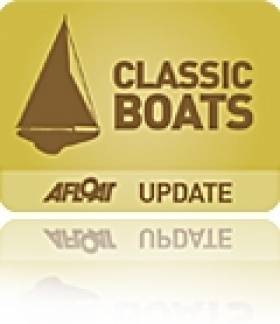Displaying items by tag: Partners Sought
Naomh Éanna Refurbishment Partners Sought to Operate Former Aran Ferry
#NaomhÉanna - A campaign continues to transform a former Aran Islands ferry which plied the route from Galway, into a major tourist attraction, reports the Galway Advertiser.
However if a financial plan is not established within a number of weeks there is a risk that the Naomh Eanna will have to be consigned to the scrapyard and Galway will lose out on an attraction which could, in time, be worth millions to the local economy.
The Naomh Eanna was withdrawn from service in 1989 and has been lying derelict in Dublin Port for more than 25 years. Last year it emerged that there were controversial plans by Waterways Ireland for her to be scrapped.
She has now been acquired by the Irish Ship and Barge Fabrication Company as also previously reported on Afloat.ie back in September. The firm specialises in the restoration of high quality heritage maritime holdings.
There are ambitious plans in place for a major refit of the Naomh Eanna to include an 80 bedroom boutique hostel, a restaurant and cafe, an island museum and micro brewery.
It is proposed she will be moored at Long Walk and become a focal point for tourism in Galway.
The Irish Ship and Barge Fabrication Company has begun work to try to structure a financial package to deliver the finished product. It is estimated that the project, which has been approved as a tax efficient investment, will cost €2.4 million.
For more on this development surrounding the Dublin-built veteran vessel, click HERE.























